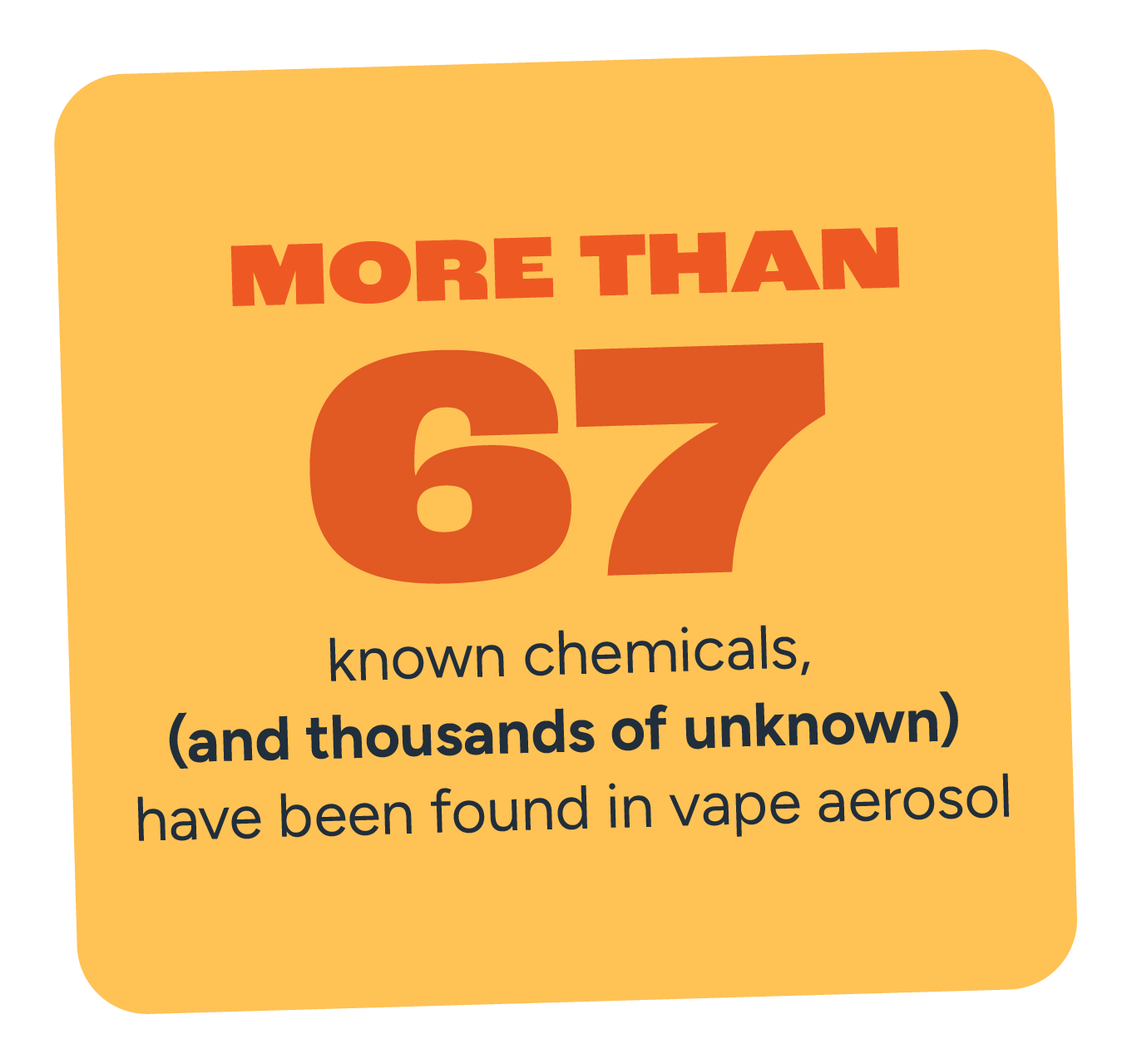Vaping truths
Here are the real facts about vaping. All videos must include one key fact and a call to action.
For more on key facts and calls to action, see the Contest Guide (PDF)
Key facts
What key facts will motivate your viewers to take action? Videos must include one key fact, but you might choose to include others if they help make your PSA more compelling.
Minnesota data: E-cigarettes are the most used commercial tobacco product among Minnesota youth. According to data from the Minnesota Youth Tobacco Survey:
In 2023, 13.9% of Minnesota high school students reported vaping in the past 30 days.
Nicotine dependence is increasing among youth who vape. Overall, 79.6% of students who vaped in 2023 report one or more signs of dependence, an increase from 70.4% in 2020.
Harmful substances: Vaping exposes users to harmful substances, including nicotine, heavy metals, and volatile organic compounds.
Lungs and heart health: Vaping poses serious risks to your lungs and heart. Prolonged exposure can lead to chronic lung diseases (like "popcorn lung") and increase the risk of heart problems like high blood pressure and heart attacks.
Nicotine: Vapes can contain extremely high concentrations of nicotine. For example, many of today’s disposable vapes contain levels of nicotine comparable to several cartons of cigarettes.
Difficulty quitting: The more nicotine a person uses, the harder it is to quit. Minnesota teens who vape report trying 10 times or more to quit.
FLAVORS AND INDUSTRY TARGETING
Appeal: Most youth who start vaping begin with a flavored product.
Thousands of flavors: The tobacco industry sells vapes in over 15,000 flavors, many of which mimic popular candy, fruit, or desserts.
Industry marketing: The tobacco industry has a long history of targeting youth through marketing strategies like flavored products, cartoon mascots, and associating their products with popular culture and athletes. Internal industry documents have referred to youth as "replacement smokers" and detail how they use marketing to appeal to young people's desire for rebellion or emancipation. Today, these tactics continue, often focusing on new products like e-cigarettes through social media, influencers, and appealing flavors.
NICOTINE DEPENDENCE AND MENTAL HEALTH
Nicotine harms the brain: The human brain is still developing until about age 25. Nicotine exposure during this time can negatively affect your attention, learning, memory, and impulse control.
Nicotine dependence: Teens can show signs of nicotine dependence quickly – sometimes even before they vape every day. In Minnesota, about 80% of high school and middle school students who vape report signs of nicotine dependence.
Stress and anxiety: Vaping doesn't relieve stress; it can actually make it worse. Nicotine dependence causes stress and mood changes, which can amplify or worsen existing stress, anxiety, and depression.
Quitting helps: Quitting vaping or smoking actually lowers levels of stress, anxiety, and depression, and improves overall mood and quality of life.
MY LIFE, MY QUIT™ - FREE HELP TO QUIT
NAbout: My Life, My Quit™ helps Minnesota teens ages 13-17 quit vaping, smoking, or using other commercial tobacco and nicotine products.
Terms: My Life, My Quit™ is free and confidential.
Services: Teens can text, call, or chat with quit coaches online. Tips and tools are also available online.
Sign up: To sign up, text “Start My Quit” to 36072 or visit mylifemyquit.com.
Even more facts
call to action
What do you want people to do after watching your video? Include a call to action for your audience. These are just a few examples.
Know the dangers of vaping…
Don’t start vaping….
Consider quitting…
Talk to your friends about the dangers of vaping…
Learn more at…






